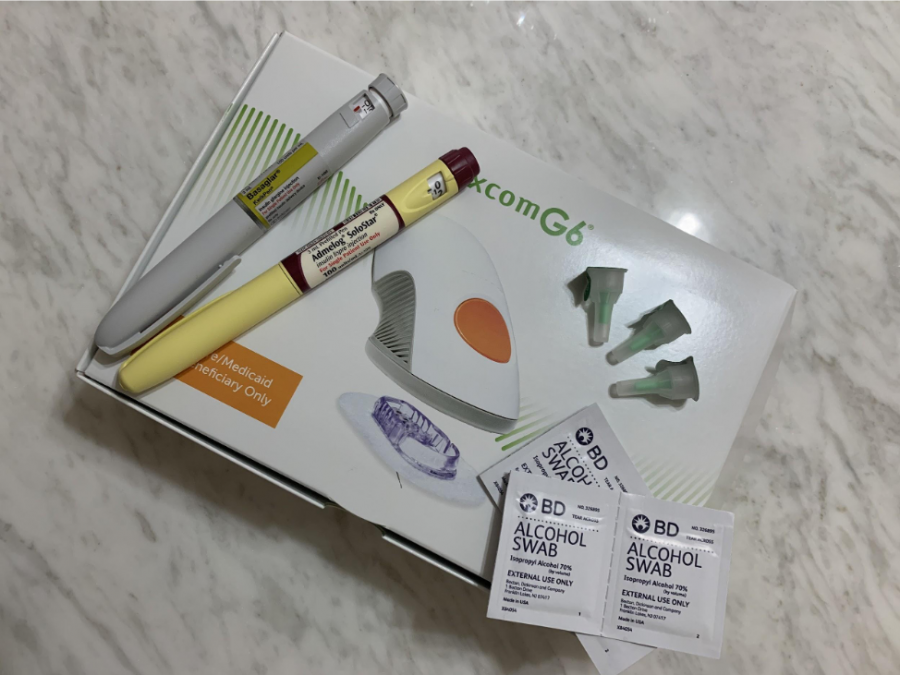Pricks and Needles: Living with Type 1 Diabetes
Medication and glucose monitoring devices Amanda uses to monitor her Type 1 Diabetes.
Taking things for granted is easy when you have those things, especially your health.
But imagine never having the guarantee of ever being all-the-way normal.
When I was 12 years old, I began to lose a lot of weight though I was eating constantly. I was always thirsty – and therefore, always urinating. I was mysteriously irritated at times, which gravely concerned my mother. Naturally, she had me tested by my pediatrician. Turns out, I was a type 1 diabetic.
At the time of my diagnosis, my blood glucose level was at 450, when it should have been between 71-180, at most. And according to my doctor, I was hours away from dying. Thankfully, that didn’t happen.
Type 1 diabetes is an autoimmune disorder, in which the body attacks its own pancreatic cells that produce insulin. To avoid blood sugar glucose from reaching levels that destroy tissues and endanger health, most people have to be treated with insulin for their entire lives, which happens to be my case.
The first thing I thought when I was diagnosed was, “What did I do wrong?”
I thought I was overeating, or eating too much sugar, but I never ate a lot of sugar or candy or sweets. How could this be happening? I did everything right. But I soon learned that there are different kinds of diabetes with different levels of severity.
Controlling type 2 diabetes usually relies on medication, diet, and exercise, and when those aren’t enough to control blood glucose, the use of insulin injections becomes imperative. People with type 2 are insulin resistant; their body can produce insulin but is unable to use it to its full potential. According to the Mayo Clinic, when people develop type 2 diabetes, their pancreas tries to compensate for the glucose entering their body.
On the other hand, type 1 diabetics, such as myself, only rely on the use of insulin injections to lower blood sugar levels. In type 1 diabetics, the immune system mistakes foreign invaders for the body’s own healthy cells. The immune system targets and kills the beta-cells that produce insulin in the pancreas. The body is unable to produce insulin after these beta-cells are killed.
The funny thing, in my case, I was (and am) terrified of needles and I ended up with a disease that relies mainly on the use of them. I remember sobbing from age 12 through 14 whenever I had to give myself an injection. The irony!
Even though my diabetes is controlled, I still live with concerns about what could happen if I don’t take care of myself. I reserve every right to worry because there is a list of complications that can accompany type 1 diabetes, such as kidney failure, and blindness
Fortunately, I’ve kept my blood glucose controlled with insulin injections and my Dexcom G6 – a device that serves as a continuous glucose monitoring system. Soon, I’ll be getting an insulin pump, which is similar to the Dexcom G6, but the difference is that it administers insulin when I need it.
Type 1 is a brutal, difficult disease. Blaming myself and worrying about potential complications is easy. All I can do is make the best of myself and enjoy life in the meantime. I may not be all-the-way normal, but I’m as normal as I can be.

Amanda is a senior majoring in communication with a concentration in journalism, and a double minor in political science and English. She has been involved...







